Office Address
123/A, Miranda City Likaoli
Prikano, Dope
Email Address
contact@gamegourmet.com
123/A, Miranda City Likaoli
Prikano, Dope
contact@gamegourmet.com
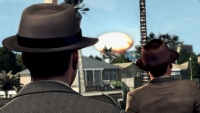
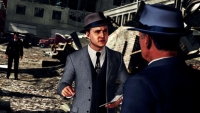
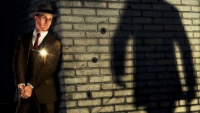

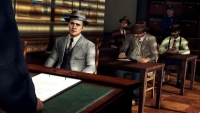
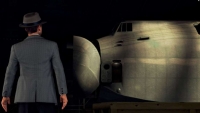
L.A. Noire: The Complete Edition Includes all previously released DLC for the console versions (including additional outfits, weapons, and cases such as “Nicholson Electroplating”, “Reefer Madness”, “Naked City”, “Slip of the Tongue”, “Consul’s Car” and more) and makes them available to players from the start. Amid the post-war boom of Hollywood’s Golden Age, Cole Phelps is an LAPD detective thrown headfirst into a city drowning in its own success. Corruption is rampant, the drug trade is exploding, and murder rates are at an all-time high. In his fight to climb the ranks and do what’s right, Phelps must unravel the truth behind a string of arson attacks, racketeering conspiracies and brutal murders, battling the L.A. underworld and even members of his own department to uncover a secret that could shake the city to its rotten core. Using groundbreaking new animation technology that captures every nuance of an actor’s facial performance in astonishing detail, L.A. Noire is a violent crime thriller that blends breathtaking action with true detective work to deliver an unprecedented interactive experience. Search for clues, chase down suspects and interrogate witnesses as you struggle to find the truth in a city where everyone has something to hide. The Broderick Detective SuitBoosts Cole Phelps’ fist-fighting abilities and resilience to damage. Throughout L.A. Noire, Phelps will inevitably encounter suspects or persons of interest who prove resistant to arrest. Phelps’ hand-to-hand fighting skills could be called into action in these cases and the Broderick suit, which enhances his fighting abilities, will help give Cole the edge in making that collar.The Sharpshooter Detective SuitSharpens your aim with rifles and pistols. Always a worst case scenario for any Detective working a case, there are inevitably occasions when pursuing or confronting a suspect escalates to gunfire. In these shootout situations, the Sharpshooter suit gives Cole extra aiming precision to take criminals down.The Badge Pursuit Challenge & Button Man SuitHidden around L.A. Noire’s beautiful recreation of 1947 Los Angeles are 20 police badges to find and collect. Find all 20 of these badges to unlock the dapper Button Man Detective suit which provides extra ammo for all weapons. Each badge also provides 5 additional XP to help unlock Intuition Points – special credits that can be used to give Detective Cole Phelps a key investigative insight when he needs it most.“The Naked City” Vice CaseJulia Randall, a stunning young fashion model with the world at her feet, is found dead, floating in her own bathtub. To the Homicide Squad it looks like a textbook society suicide – a glamorous life come to a nasty end – but coroner Malcolm Carruthers remains unconvinced. It falls to Detectives Phelps and Earle to work the scene, and determine which of Miss Randall’s many vices finally killed her.”A Slip Of The Tongue” Traffic CaseWhen a suspect caught behind the wheel of a stolen car claims to have bought the vehicle fair and square, Detectives Phelps and Bekowsky are unimpressed. When he produces a pink slip and bill of sale as proof, they sit up and take notice. There follows an investigation that will throw up bumbling car thieves, double talking auto dealers, and a theft racket that stretches across Los Angeles and the state line.”Nicholson Electroplating” Arson CaseAt 9.45 in the morning, a thunderous explosion rocks Los Angeles. City blocks are flattened and smoke and ash fill the air. Detectives Phelps and Biggs race to the site of the former Nicholson Electroplating plant to find a pile of unanswered questions. What caused the explosion? What were Nicholson’s employees working on? And where are chief chemist Dr. Harold McLellan and his mysterious female assistant?”Reefer Madness” Vice CaseVice Narcotics receives a tip from one Freddie Calhoun, junkie, snitch and all around no-hoper. Freddie seems to be playing it straight for once, sharing information on a city-wide marijuana distribution ring. Detective Phelps and Earle will search, question and raid their way to the top of the operation, and in the process learn how the crooks could be smuggling fifty pound shipments of dope in plain sight.“The Consul’s Car” Traffic CaseIn ad dusty backlot, a gleaming new model Packard sits abandoned. Without an owner, without license plates, without even a full complement of wheels, the car could be headed for the scrapyard and the case for a dead end. But detectives do have one lead – the vehicle is registered to the Argentinean Consulate of Los Angeles. And there is the matter of a curious diary recovered from the scene…
Reviews
There are no reviews yet.